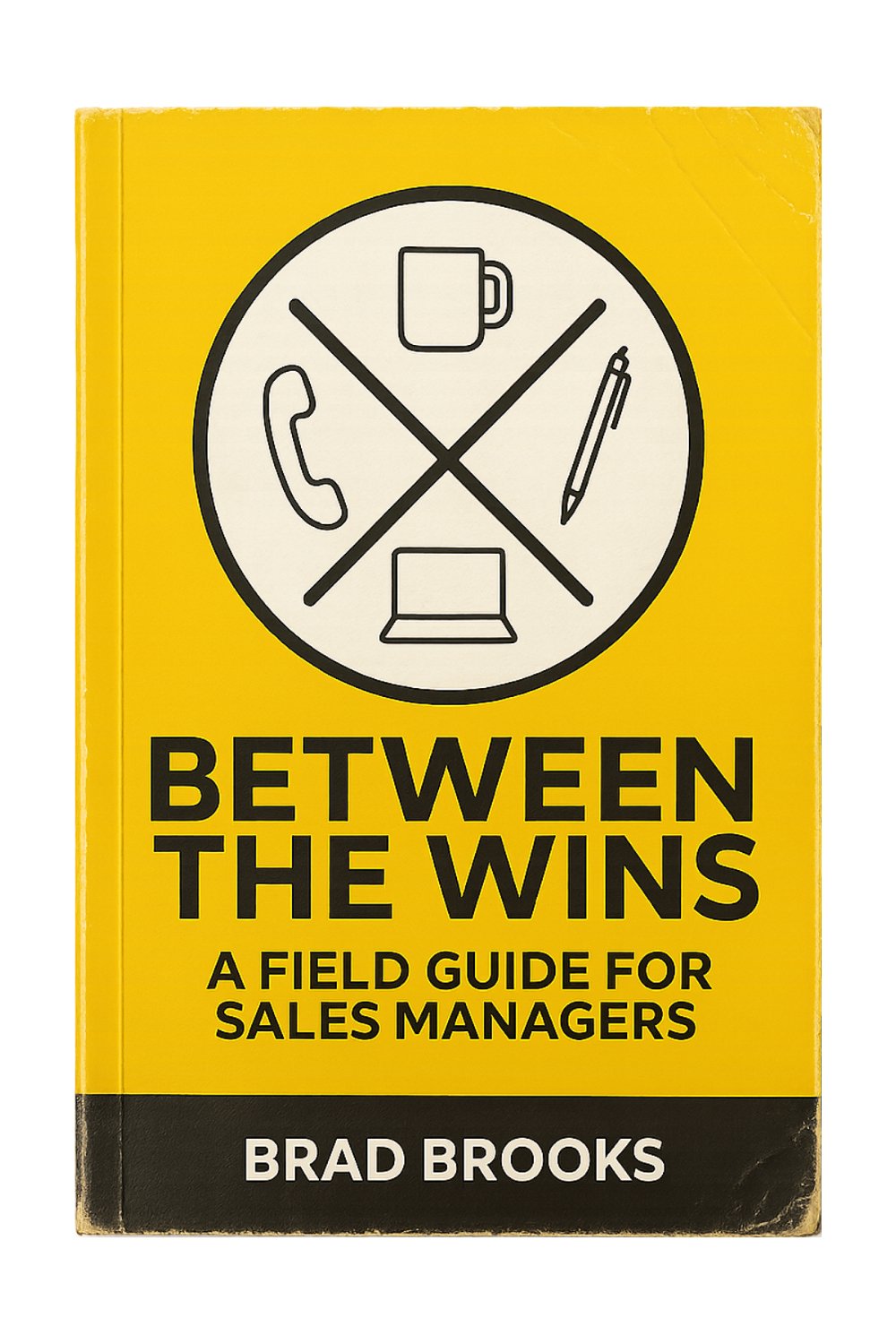
Chapter 4:
Questions First. Glove Later.
Frustrated by a stalled deal seemingly stuck on a surface-level buzzword, Taylor asks Gavin for help, sparking a session focused on the discipline of diagnosis. Using a specific analogy and a clear framework, Gavin coaches the team to ask critical diagnostic questions before ever thinking about prescribing a solution, emphasizing that understanding precedes treatment.
The Stratton Stall
Taylor caught Gavin near the end of the day, her usual composure visibly frayed. “Gavin, got a minute? I’m spinning my wheels on Stratton Industries.” This was the deal she’d mentioned in the huddle, the one stalled deep in procurement citing vague “integration concerns.”
“I’ve gone back through my notes,” she continued, holding up her tablet displaying the CRM entry, “and all I see is them repeating the need for ‘better integration.’ We talked about it, showed them the API toolkit demo… it felt aligned initially. But now? Nothing. Just vague concerns and radio silence from procurement. It feels like I missed something fundamental.”
Gavin nodded slowly, taking the tablet she offered. He scanned the entry in the CRM – detailed notes on the features discussed, the demo shown, the stages completed. Lots of seller activity documented. He scrolled further, looking for the customer’s voice, the answers to core questions. Where’s the diagnosis? he thought. Where’s the clear understanding of why ‘better integration’ matters to them, right now?
He looked up at Taylor. “Okay, I see the activity, but maybe not the underlying diagnosis. Good catch sensing something’s off.” He handed the tablet back. “Let’s make this the focus of our Friday session. Come prepared to walk us through the early Stratton discovery calls. I think the whole team can learn from this.” Taylor nodded, looking slightly relieved to have a plan.
Friday Training: Questions First. Glove Later.
Friday afternoon, the team gathered, ready to tackle the Stratton puzzle. Gavin stood near the whiteboard, where the Mindset and Systems nodes were already established.
“We talked briefly about Stratton this week,” Gavin began, nodding towards Taylor. “Taylor rightly sensed something was missed in the early stages, leading to downstream stalls. The temptation, when we hear a familiar keyword like ‘integration,’ ‘efficiency,’ or ‘reporting,’ is to immediately jump to our solution. It comes from a good place – eagerness to help, confidence in our product.”
He paused. “But think about it differently. Imagine going to the doctor. Let’s say,” he glanced towards Chris, who played goalie on a local rec hockey league, “you go in for a sore shoulder you tweaked making a save last night. You walk in, expecting the doctor to ask where it hurts, how it happened, check your range of motion… Instead,” Gavin paused, then deliberately mimed pulling on an invisible latex glove, snapping it crisply at the wrist, “he takes one quick look at your chart, snaps on a glove, ignores your shoulder entirely, and says, ‘Okay, I’m going to need you to cough.’”
A few confused chuckles rippled through the room. Chris raised an eyebrow.
Gavin continued the scenario, deadpan. “Then, because maybe you happen to have a slight cough from seasonal allergies, he nods sagely and prescribes a heavy-duty inhaler. Sends you on your way.” He looked around the room. “Your shoulder is still killing you, and now you’re questioning everything about that interaction. Why?”
“Because he didn’t diagnose the actual problem!” Taylor said immediately.
“Exactly,” Gavin affirmed. “He ignored the reason you came in, reacted to an unrelated symptom, and prescribed a completely irrelevant treatment. No real diagnosis means no effective treatment.”

“It’s the same for us,” Gavin continued, turning to the whiteboard. “If we jump straight to prescribing our solution based on a surface-level buzzword, without taking the time to properly diagnose the real pain, the urgency, the context… we risk missing the mark entirely. Good discovery, asking the right diagnostic questions upfront, doesn’t slow things down; it builds trust and actually accelerates the deal later by ensuring alignment.”
He drew a line branching from the smartphone icon in the Action quadrant.
NO DIAGNOSIS, NO TREATMENT
“This is about the action of effective discovery,” Gavin explained. “It requires discipline and a specific set of questions designed to get beneath the surface.” He listed them clearly:
→ What are they trying to solve?
→ Why now? What changed?
→ What’s the timeline or urgency?
→ Who else needs to say yes?
→ What does success look like?
→ What happens if they do nothing?
“These six questions,” Gavin continued, tapping the list, “form the core of our diagnosis. Notice how they move beyond just the what (the problem) to the why (the urgency, the impact, the consequences). Questions like ‘Why now?’ and especially ‘What happens if they do nothing?’ are crucial. They help both you and the customer understand the true cost and urgency of the problem. If the cost of doing nothing is low, the urgency to buy will also be low, regardless of how elegant our solution is.”
He looked around the room, letting the framework sink in. Then, connecting back to the analogy and his earlier gesture with an understated tone, he added the mantra:
Questions first. Glove later.
This time, the chuckles were knowing. Chris smirked. “So, no random coughing tests for prospects, boss?”
Gavin met his eyes with a slight smile. “Probably best to stick to the six questions, Chris. We’re avoiding deals dying from preventable complications due to misdiagnosis.”

Live Roleplay: Practicing the Diagnosis
“Alright, let’s practice using these questions,” Gavin announced, shifting into coaching mode. “Let’s take a common scenario. Jamie, you’re talking to a prospect, VP of Operations, who says, ‘We need to improve our warehouse efficiency.’ Use the framework. Ask the diagnostic questions before you even think about pitching our logistics module.”
Jamie nodded eagerly, perhaps a little too eager. “Okay, Mr. Prospect! Improve efficiency! Got it. So, tell me… is your business hemorrhaging money due to this inefficiency?! Are forklifts crashing daily?!”
Taylor stifled a laugh. Chris rolled his eyes dramatically.
Gavin held up a hand gently. “Okay, Jamie, good energy, but dial back the intensity just a notch.” He smiled encouragingly. “Remember, it’s a conversation, not an interrogation. Start broad, then get specific. Maybe begin with ‘Help me understand, when you say improve efficiency, what specific part of the warehouse process feels the least efficient right now?’”
Jamie took a breath, recalibrated. “Right, right. Less panic, more diagnosis. Okay. ‘Mr. Prospect, what part feels least efficient?’” He continued, stepping through the questions more deliberately, asking about the impact of inefficiency, the timeline for needing improvement, who else cared about it, what better looked like, and the consequences of staying the same.
Chris then volunteered, surprisingly sharp in his application, using the questions to dissect a past deal they’d lost, methodically identifying where their diagnosis had been shallow. The practice session turned into a collaborative post-mortem, reinforcing the framework’s utility.
Real-World Tie-In: Taylor Revisits Stratton
Armed with the new framework, Taylor immediately planned her re-engagement strategy for Stratton Industries. Instead of pushing another demo or just asking about the procurement delay, she crafted an email focused purely on diagnosis, referencing their previous conversation but pivoting to the core questions.
Her outreach focused on: “Following up on our conversation about ‘better integration’… to ensure we’re focused on the highest impact area, could you help me understand: 1) What specific bottleneck or pain point is that lack of integration causing day-to-day? 2) What’s the trigger making this a priority to solve now versus six months ago? 3) If this isn’t resolved by [specific date, e.g., end of year], what’s the tangible impact on the business?”
Later that week, during their one-on-one, Taylor shared the update with Gavin, a note of relief in her voice. “Got a detailed reply back from the champion at Stratton. My diagnostic questions opened things up completely. Turns out the ‘integration concern’ wasn’t about our tech at all. The real problem,” she emphasized, using the language from Chapter 3, “was a specific reporting delay impacting their ability to invoice accurately, costing them measurable dollars each month. The urgency (‘Why now?’) was tied to an upcoming audit. And the cost of inaction was significant fines. Procurement wasn’t the blocker; the lack of a clear, quantified business case tied to the real pain was.”
“Excellent diagnosis, Taylor,” Gavin commended. “You used the framework, went beyond the buzzword, uncovered the real pain, the urgency driver, and the cost of inaction. Now you’ve earned the right to talk about how our solution addresses that specific problem.”
Taylor nodded, the connection clear. “Definitely more effective than prescribing an inhaler for a sore shoulder.”
Gavin smiled. “Progress.”
Coaching Session Reflection
Gavin made a quick entry in his journal, capturing how the team was adjusting to asking deeper questions before prescribing solutions.
What Went Well:
- Doctor analogy landed effectively – The sore shoulder / cough test example, especially directed at Chris, seemed to resonate more than a generic analogy. The pantomime got their attention and underscored the absurdity of prescribing without diagnosis.
- Framework structure was clear – The 6 Core Diagnostic Questions felt practical and logical. Reps seemed to grasp the purpose of each question, especially “Why now?” and “What happens if they do nothing?”.
- Role-play was productive – Despite Jamie’s initial over-the-top approach (which needed correction), the practice helped solidify the questioning technique. Chris’s application to a past lost deal was a strong reinforcement moment.
- Taylor’s immediate application – Seeing Taylor plan her Stratton re-engagement using the diagnostic questions shows the concept is translating into potential action quickly. Her later success confirmed the value.
- Mantra connected – “Questions first. Glove later.” seemed to stick as a memorable summary, tying back to the analogy.
What Didn’t Go Well / Opportunities:
- Initial role-play intensity – Jamie’s first attempt highlighted the risk of turning diagnosis into interrogation. Need to keep emphasizing conversational tone and genuine curiosity.
- Comfort with “Cost of Inaction” – Still sensed some hesitation around asking potentially negative or consequence-focused questions. Requires more practice and coaching on phrasing.
- Connecting back to Intention – Need to more explicitly link why these diagnostic questions are essential for fulfilling the goal of solving the Real Problem identified in Chapter 3.
- Generalizing the skill – While Stratton was a good anchor, need to ensure reps apply this thinking consistently across all deals, not just stalled ones.
Action Items:
- Review Stratton outcome – Circle back with Taylor next week to reinforce the positive result stemming directly from applying the diagnostic framework. Share anonymized success with the team.
- Focus 1:1s on “Cost of Inaction” phrasing – Workshop comfortable, collaborative ways to ask “What happens if you do nothing?” based on specific deal contexts.
- Spot-check discovery notes – During pipeline reviews, specifically look for evidence of all 6 diagnostic questions being addressed in recent discovery call notes.
- Introduce diagnostic checklist? – Consider developing a simple pre-call checklist based on the 6 questions to help reps prepare their discovery calls more intentionally.
- Reinforce link to Chapter 3/5 – In next session, explicitly connect how these diagnostic questions feed into proving value (Ch 5) and fulfilling intention (Ch 3).
✦ ✦ ✦
Coaching Plan: No Diagnosis, No Treatment
Session Focus
- Instill discipline of diagnosing before prescribing solutions.
- Introduce the 6 Core Diagnostic Questions framework.
- Emphasize uncovering urgency drivers (“Why now?”) and consequences (“What happens if they do nothing?”).
- Shift focus from seller activity (demos, pitches) to understanding the buyer’s reality.
Talking Points
- The Doctor Analogy (Sore Shoulder / Cough Test): Build trust through relevant inquiry, not irrelevant procedures or assumptions. Use pantomime here.
- Buzzword Trap: Recognize surface symptoms vs. underlying conditions.
- 6 Questions Breakdown: Explain the purpose of each question (Problem, Urgency, Timeline, Stakeholders, Success, Inaction Cost).
- Urgency is Key: Highlight “Why now?” and “Cost of inaction” as critical differentiators.
- Discovery Accelerates Deals: Counter the fear that asking questions slows things down. Good diagnosis prevents downstream stalls.
- Mantra: Questions first. Glove later. (Connect back to the analogy/pantomime).
Questions to Ask the Team
- “Which of these six questions do you feel you consistently ask well? Which one do you tend to skip or ask vaguely?”
- “Think about a recent stalled deal. Applying this framework now, what diagnostic question might have revealed the real issue earlier?”
- “How can asking ‘What happens if you do nothing?’ feel less confrontational and more collaborative?” (Discuss phrasing/tone).
- “How does this diagnostic approach connect back to ensuring ‘Real Problem’ from our Primary Intention framework?”
During the Meeting
- Observe reactions to the doctor analogy and pantomime – ensure the humor lands subtly and reinforces the point.
- Listen during role-play: Are reps truly asking open-ended diagnostic questions, or are they leading the witness towards our solution? Correct gently.
- Note who struggles with quantifying impact or asking about consequences – may indicate discomfort with potentially “negative” conversations.
- Encourage sharing of past “misdiagnosis” experiences (like Chris did) to normalize the learning process.
Where I Might Need to Step In
- Reinforce the connection between this framework and the previous chapter (Your Intention Matters Most).
- Provide specific examples of phrasing for the more challenging questions (esp. Cost of Inaction).
- Manage the role-play energy – ensure it stays focused on the framework application (like course-correcting Jamie).
- Address any lingering beliefs that deep diagnosis will “annoy” the prospect or “take too long.” Emphasize efficiency gains later.
- Ensure the Mantra lands with the intended understated humor and reinforces the core message tied to the analogy/pantomime.
Related Chapters
- Chapter 3: Your Intention Matters Most
- Chapter 5: Prove It’s Worth Solving
- Chapter 9: Uncovering Hidden Constraints
- Chapter 8: Diagnose the Pushback
